Wee Archie earns its wings!
24 July 2018
Wee Archie, our miniature model supercomputer made from Raspberry Pi boards, has been an invaluable resource in EPCC's public outreach activities. So much so that we had to build a second one!
The first one used green LED panels (Wee Archie Green) while its successor used blue LEDs (Wee Archie Blue). Over the past few years our Wee Archies have been to events in Europe, the United States and China, including science festivals, conferences, and even an art installation!
Built with portability and ease/speed of set-up in mind, all Wee Archie's components are housed in a single clear acrylic casing, with only a power cable and an Ethernet port as inputs. This gives an unobstructed view of the internal components, allowing the inner workings to be easily seen. Wee Archie was constructed to be a supercomputer analogue, and contains service nodes, compute nodes, a power supply, a shared filesystem and an interconnect, giving an insight into the structure of real supercomputers.
A computer with no software is just a box of components, and we have created several demonstration codes to engage users and give examples of the value of supercomputers. In particular, we want to showcase some of the scientific research that uses ARCHER. Previously we have created a demonstration based on a version of Gaitsym where users could design their own dinosaurs by adjusting body and limb sizes of various dinosaur templates, then race them to see which dinosaur was fastest. We also have a demonstration using the NAMD molecular dynamics code, where a pheromone must be guided out of a protein in mouse urine!
Another important use of ARCHER is in computational fluid dynamics (CFD). To represent this research field on Wee Archie, we created one of our most popular demonstrations, which allows a user to design the cross section of an aeroplane wing, whose aerodynamic properties are then determined by Wee Archie. Afterwards, the user can find out whether their aeroplane could fly, and how far across the world it could go on a single tank of fuel. To facilitate creating this and future demonstrations we have developed a Python framework, which allows a server to run parallel simulations on Wee Archie, and graphical clients for designing inputs and viewing outputs on laptops. The framework provides a template from which new demonstrations can be easily created.
With our CFD demo, users are first shown the cross-section of an aeroplane wing, where they can adjust the angle of attack, camber (curve), and thickness of the wing using sliders to create their desired shape.
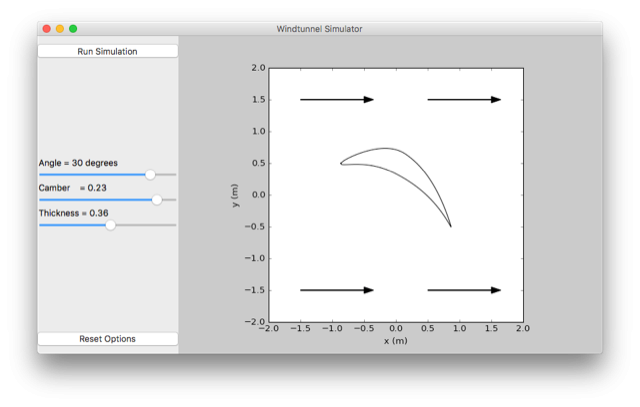
They then submit this shape to Wee Archie, which will then calculate the airflow over the wing. Whilst this calculation is being performed, the client displays dashed lines over the wing to show how the computational domain is split up between the different nodes on Wee Archie. The calculation takes around 25 seconds, giving time for a demonstrator to explain what Wee Archie is doing. Once the simulation is complete, the airflow around the wing is displayed on screen, along with a vector indicating the direction of the net force (lift and drag) on the wing. The air pressure around the wing can also be displayed, presenting an opportunity for a conversation about what conditions are needed to generate lift.
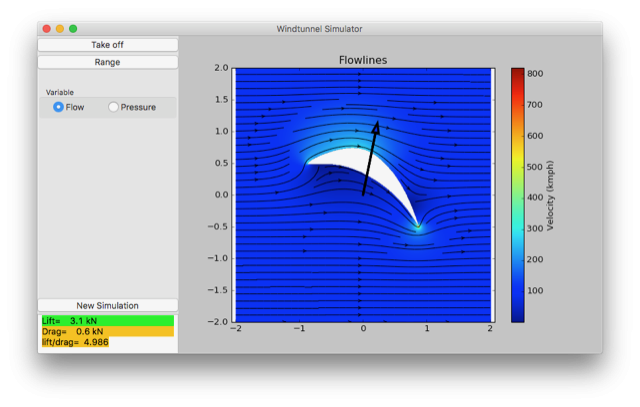
Now for the fun! The user clicks the “take off” button, which will attempt to make a plane fly with that wing. An animation ensues, with the plane either soaring gracefully into the air...
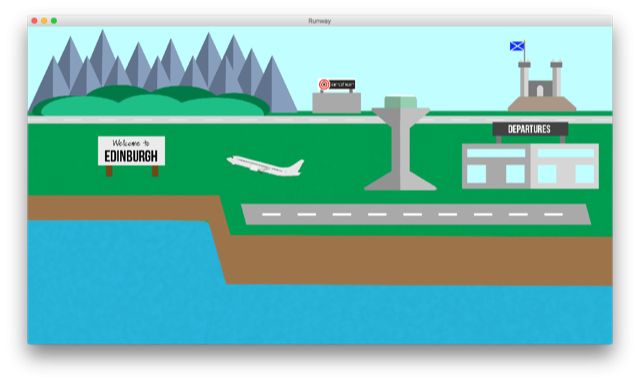
... or falling off the cliff at the end of the runway into the sea, where it slowly sinks beneath the waves.
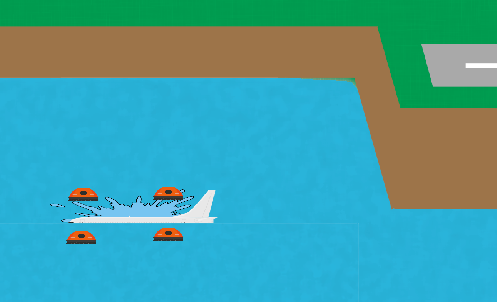
In addition to this, the user can see how far the plane can fly with that wing design. This is displayed as a shaded area on a world map.
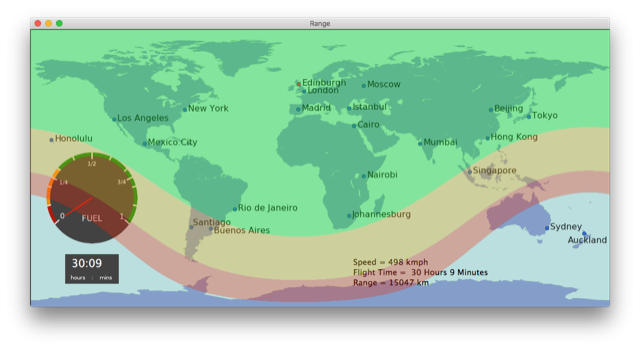
This is animated, with the shaded area growing in size as the fuel gauge empties. Users can compete with each other to see whose wing can carry the plane the furthest. If a plane cannot take off, it could still have a large range. This is because in reality a plane does not maintain a fixed wing shape, but alters the shape of its wing during take-off, cruise and landing to optimise its shape for the task at hand. Users can experiment with different wing designs, and determine the required properties for takeoff and cruising. This educates the user on aerodynamics, and also demonstrates why a supercomputer is useful for designing and testing many prototypes in quick succession.
To date we have used the CFD demo at Bang Goes the Borders, IET Engineering the Future, The Big Bang Fair and the Edinburgh International Science Festival and it has received positive responses from children and adults alike! Between the Big Bang Fair and Edinburgh International Science festival, 2165 planes were designed, with 744 planes successfully taking off and travelling a combined travel distance of over 6.6 million kilometres – enough to fly to the Moon and back seven times! In the future we plan to have several other demos, showcasing more kinds of research carried out on ARCHER. We (and Wee Archie) look forward to meeting all the people we can at future science festivals and conferences. See you soon!
